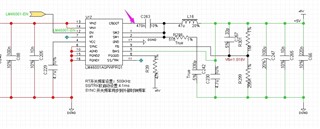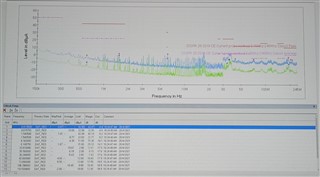Hi Team,
LM46001-Q1 was used on customer side. Now they have a Conduction issue when they passing EMI test.
When they try RC on SW pin, it doesn't improve after try may RC value. But when they try to connect a resistance between Cboot pin and Capacity. It solved conduction issue.
Is there any risk when they connect a 51 ohm resistance between Cboot pin and capacity?

Conduction before add 51 ohm resistance:

Conduction after add 51 ohm resistance:

Waveform on Cboot(Use differential probe) before add 51ohm resistance:

Waveform on Cboot(Use differential probe)after add 51ohm resistance:

Best Regards
Songzhen Guo

